Exploring abandoned places is thrilling, no doubt. That creeping sense that we aren’t supposed to be somewhere eggs us on to go deeper. At Wanderlust Projects, my illicit experience design collaboration with N.D. Austin and an expanding circle of intrepid crew, we’re often asked how we find places or how we get in. Getting in is the first and often the easiest step of our work as transgressive placemakers.
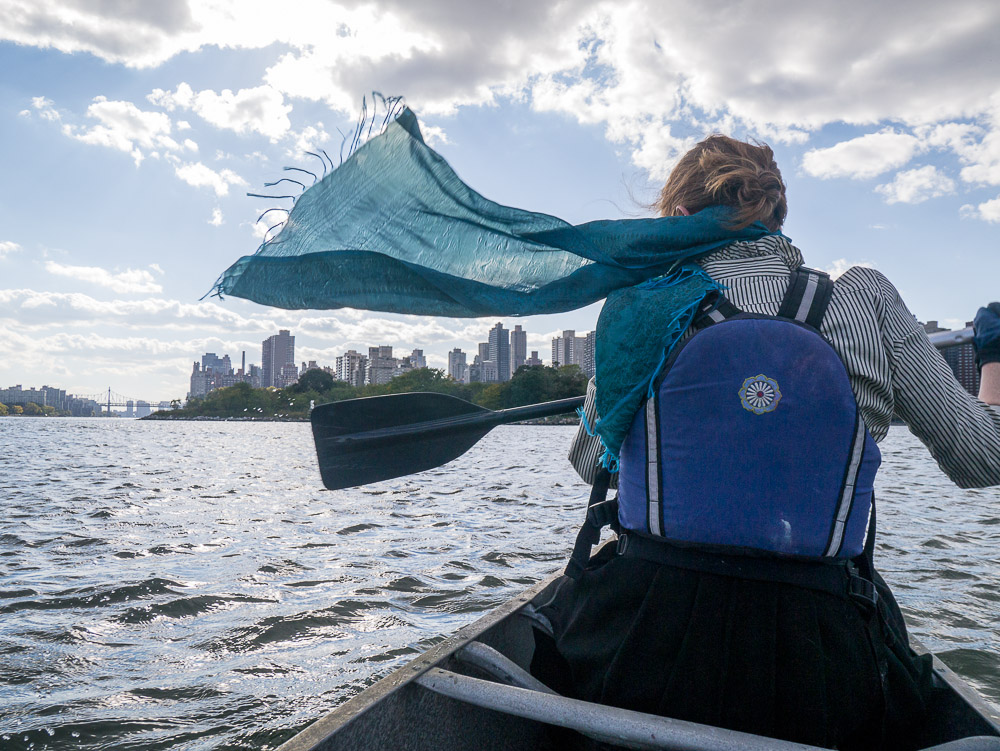
Getting there is the easy part. (Photo by Tod Seelie)
I like to describe what Wanderlust does as reanimating a space or getting it back into circulation. We’re neither preserving what is there nor taking it over as a stage for something preconceived. We spend time in the place to discover what it affords. You could call this phase “cultural excavation”. Simultaneously, we research the history of how it was used and the people who used it. Then, we bring the insights from these two activities together to design an experience that gets people engaged with interesting parts of its history while indulging in its current condition.
Cultural Excavation
Cultural Excavation is about spending time in a place and following our curiosity by listening to how the location makes us feel. What is fascinating and peculiar? Where do we feel comfortable? What feels unsettling?
It takes several visits to get past our initial reactions to a place. We joke that we are never going to do a murder mystery. That’s because every underutilized space feels ripe for a ghost story upon first encounter. Cultural excavation is about getting bored with the notion that a ghost will make any uninhabited, decaying, or inaccessible place feel alive. Once we are comfortable in a location, what do we want to do there to bring it to life?
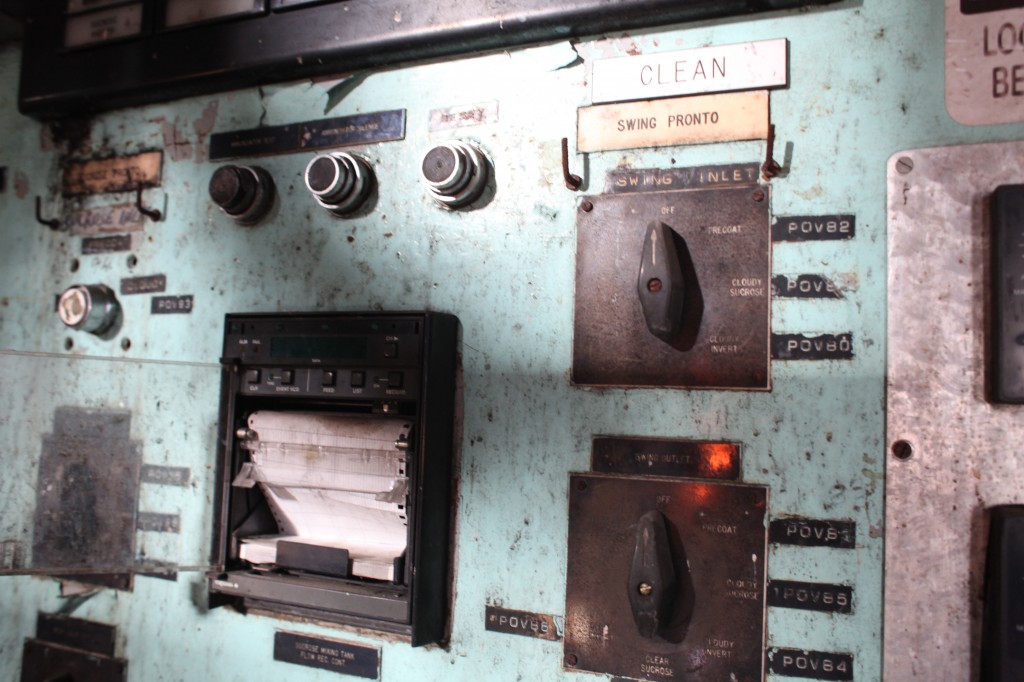
Our major takeaway from the cultural excavation of the Domino Sugar Factory: Sugar production is damn complicated. We can only imagine the diverse technical skills it took to make this stuff go.
It’s important to note that spending time in a place is different from surveyance. Surveyance is about physical inventory; what’s there, how do we get in, what can we get away with, what are the risks. Surveyance is what many urban explorers are spectacular at - reconnaissance to facilitate getting into and getting away with. This is integral to any Wanderlust operation. But to creatively reanimate a space – rather than just penetrate it – we have to put in time to get to know it.
Historical Research
What we find most fascinating is what N.D. calls the mythology of a place (rather than the mysticism of a place), which is about its material history and the characters that inhabited it. Historical research goes hand in hand with cultural excavation. Who did what here and when? What did the place mean to them? How was the place designed to serve a particular purpose? Why has it fallen into disuse? Searching online is a start, but combing through special collections at libraries or even documents found on site will churn up the historical texture needed to connect with a past era. Interviewing people who hold the place dear offers a gold mine of insight. Anything to help us piece together what was going on there in its heyday, the things we only hear echoes of in cultural excavation.
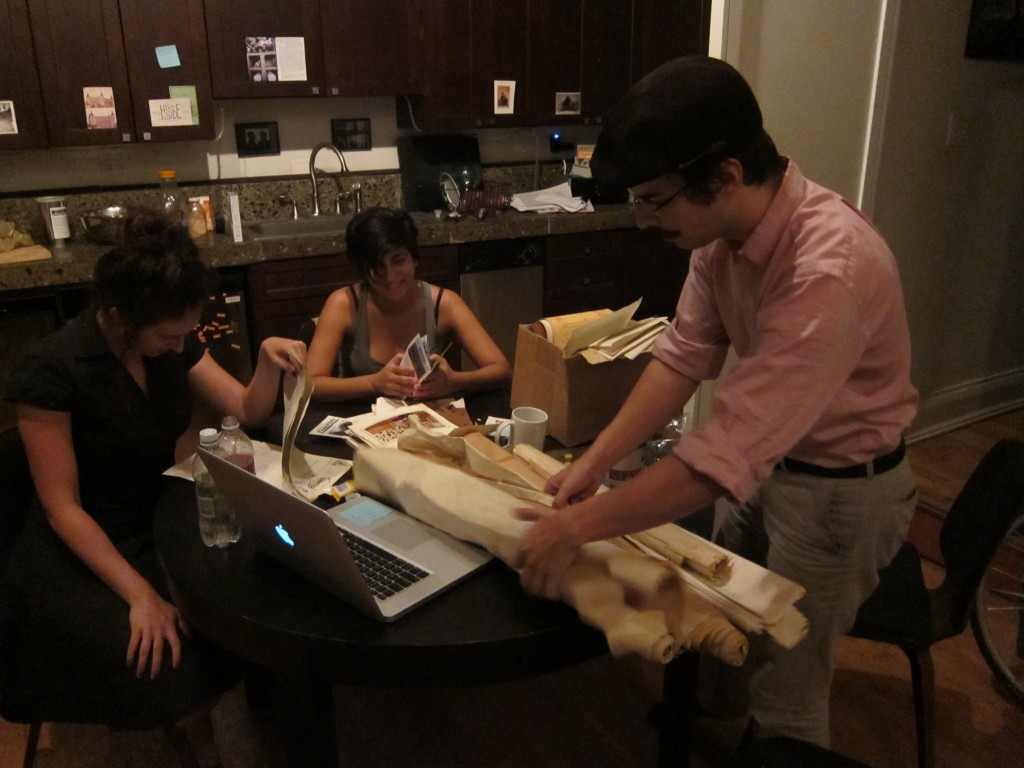
Reviewing research materials on Penn Hills with the Audio Smut team.
Being Transported
Cultural excavation and research guides us to moving stories and historical dramas. We’ve gotten pretty good at smelling an interesting backstory early on in surveyance, but it can take some digging to hone in on a forgotten shred of lived experience that we can give as a gift to our guests. That immaterial kernel varies widely from space to space. At Penn Hills, it was the energy of the place in its heyday set in the backdrop of its current decay. We succeeded so wildly with this that I myself was transported in an unexpected way.
One thing we discovered in doing research on Penn Hills was that the employees loved working there. They were very loyal to the resort, pouring their love into the raunchy weekly newsletters for guests and the online obituary for the resort’s owner. Their fervor didn’t make sense to us on first pass. This was a cheesy, trashy place designed for short stays and overseen by corrupt management. What was there to love in working here?
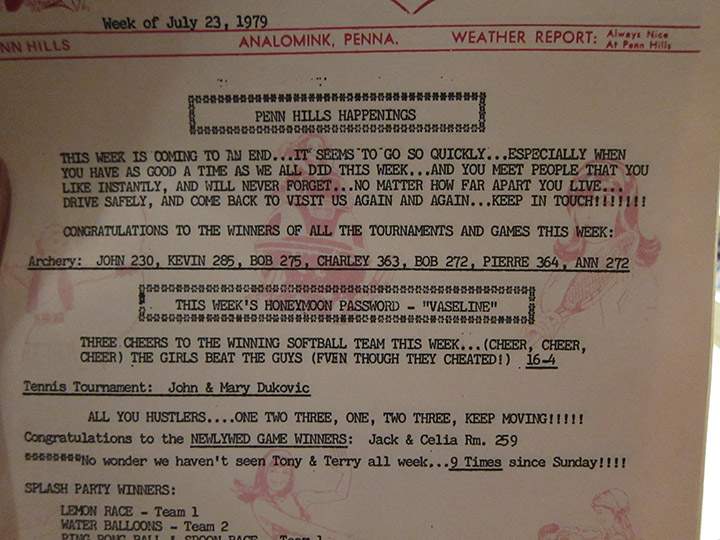
The Chatter, Penn Hills’ weekly newsletter, was full of gossip and enthusiasm. Note the honeymoon password, the source of our code name for the project. (The honeymoon password was the same week-to-week.)
No matter that we couldn’t reckon why. For the Illicit Couples’ Retreat, we instructed our stewards to take on this persona in guiding guests. They loved the place. They made creative, plausible excuses for its derelict condition. They jumped to serve and delight the guests.
Over the radio, I kept tabs on the stewards and marked the timing of guest movements. On another channel, N.D. managed the security and any crew who were not directly guiding guests. I also went through the rooms after guests left to collect the phones that Audio Smut had modified to play their audio pieces designed for the event.
I couldn’t help gossiping over the radio about the condition of the rooms. How much champaigne had each couple drunk? How disheveled were the bed sheets? Stewards eagerly responded with what they may or may not have heard when waiting for the guests outside the cabins. We all speculated together. The communication channel instantly morphed into a gossip line. It was tantalizing!
After going through a few rooms to collect phones and pumping new information to the gossip line, I stopped dead in my tracks. A chill went down my spine. I am working for Penn Hills Resort and this is what it’s like. So this is why people loved working at this place! Unintentionally, my own design process intended to transport the guests had also transported me. That experiential insight is thrilling.
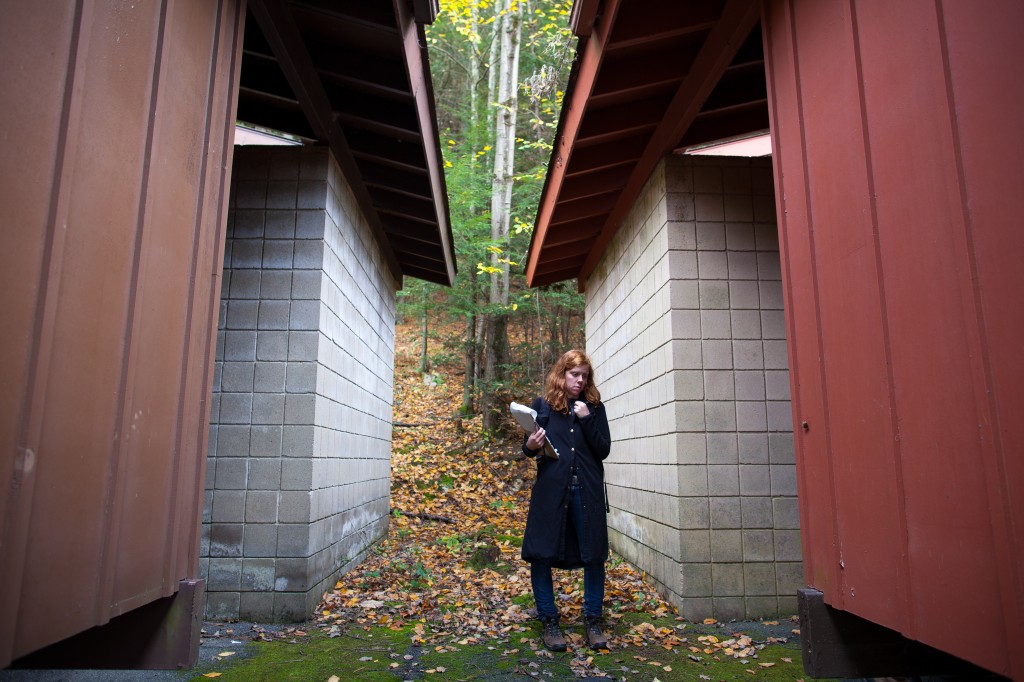
Me on the radio between cabins at abandoned Penn Hills. (Photo by Yoni Brooks)
That feeling of being transported is a benchmark of success for me in designing Wanderlust experiences.